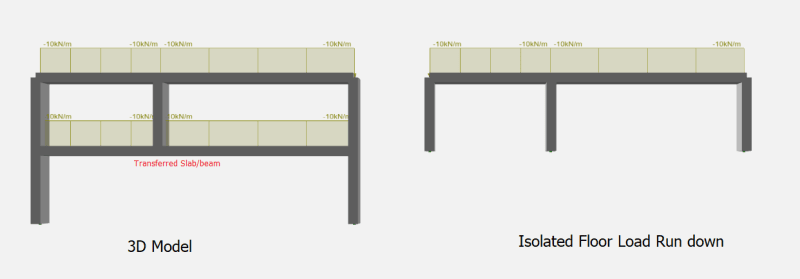StayHome
Structural
- Mar 30, 2020
- 8
Hi guys hope you all safe during this hard time.
I have a structure that contains many levels of transfer slab and I am looking for a convenient way to build the model in FEA package, say Ram Concept.
This is what I am doing now
Analyse and design the slab based on floor by floor load run down procedure - model the top level and get the reactions and then model the lower level and input the reaction from top level as loading applied on the slab and then another lower level till the lowest floor.
Q1, Is this the correct procedure?
Q2, If the answer to Q1 is no, what is your procedure?
Q3, If the answer to Q1 is yes, what can I do to quickly input the reaction from upper floor as loads on the floor in say, Ram Concept? Is there any way to automatically get the reactions and transfer to the loads instead of manually input? I am thinking of using Ram Structural System and then export slab by slab but the problem I found is the loading from a full model is not the same as floor by floor load rundown and thus cannot be used in slab analysis and design.(Can be used for envelop purpose though). Am I wrong?
Thank you.
I have a structure that contains many levels of transfer slab and I am looking for a convenient way to build the model in FEA package, say Ram Concept.
This is what I am doing now
Analyse and design the slab based on floor by floor load run down procedure - model the top level and get the reactions and then model the lower level and input the reaction from top level as loading applied on the slab and then another lower level till the lowest floor.
Q1, Is this the correct procedure?
Q2, If the answer to Q1 is no, what is your procedure?
Q3, If the answer to Q1 is yes, what can I do to quickly input the reaction from upper floor as loads on the floor in say, Ram Concept? Is there any way to automatically get the reactions and transfer to the loads instead of manually input? I am thinking of using Ram Structural System and then export slab by slab but the problem I found is the loading from a full model is not the same as floor by floor load rundown and thus cannot be used in slab analysis and design.(Can be used for envelop purpose though). Am I wrong?
Thank you.


